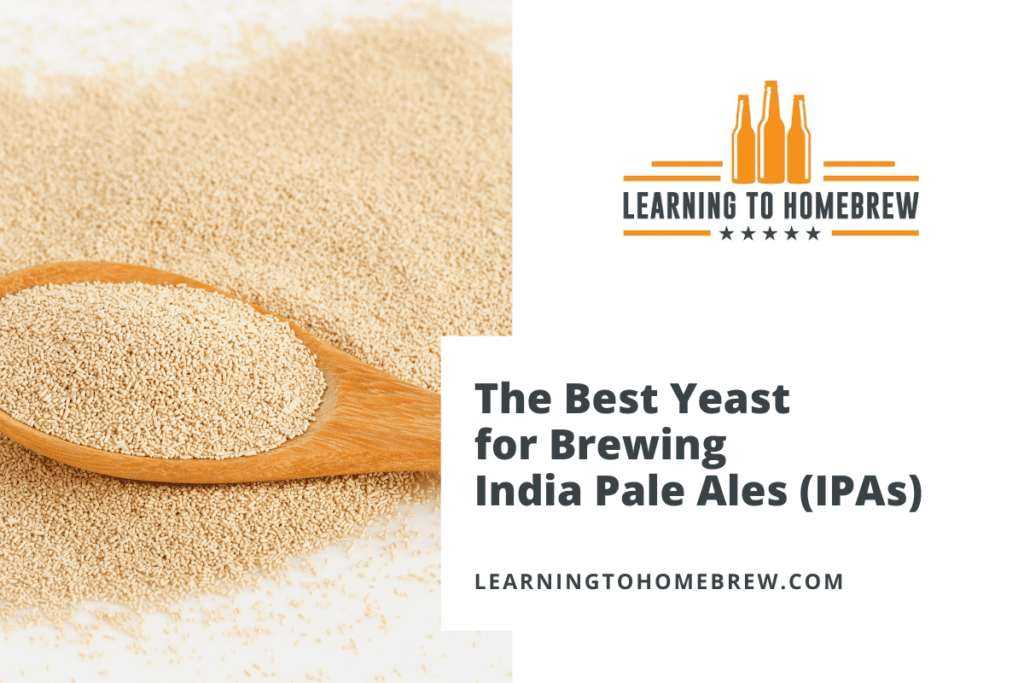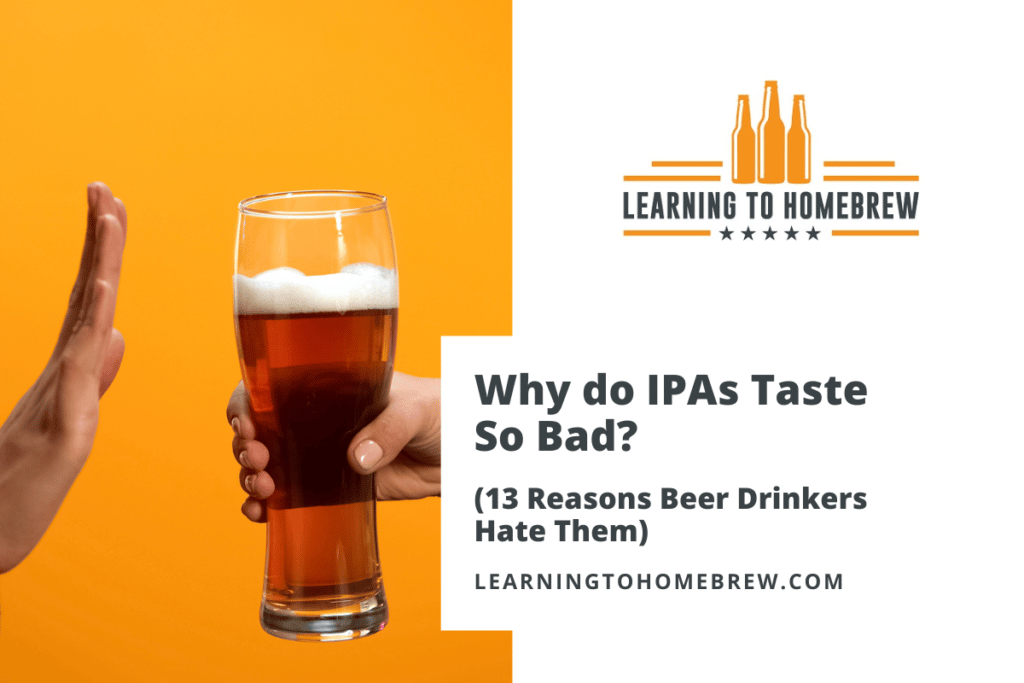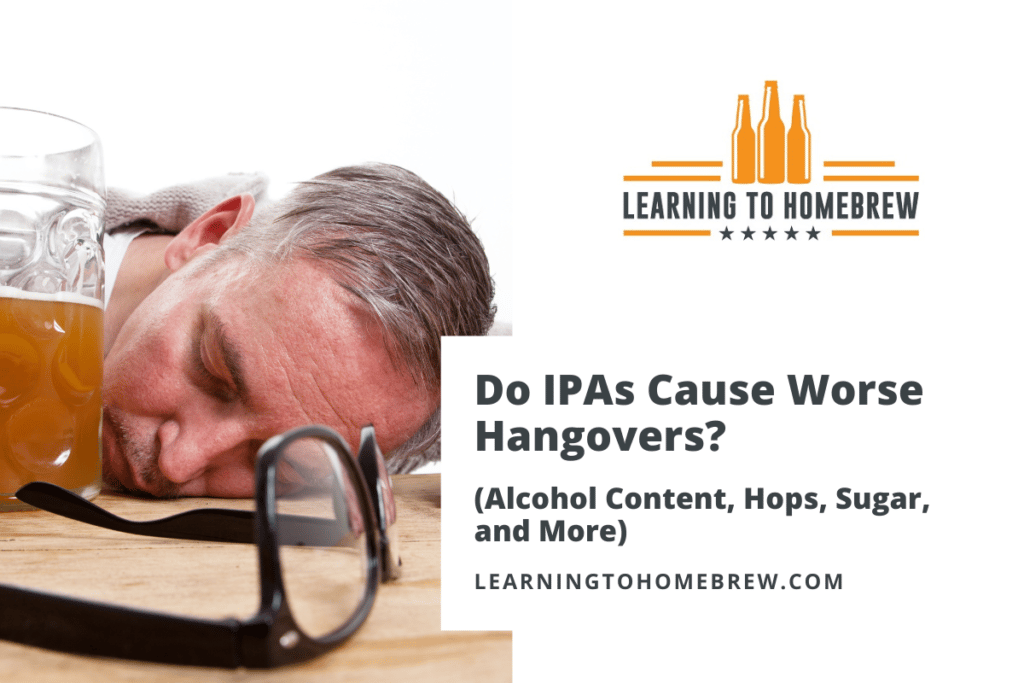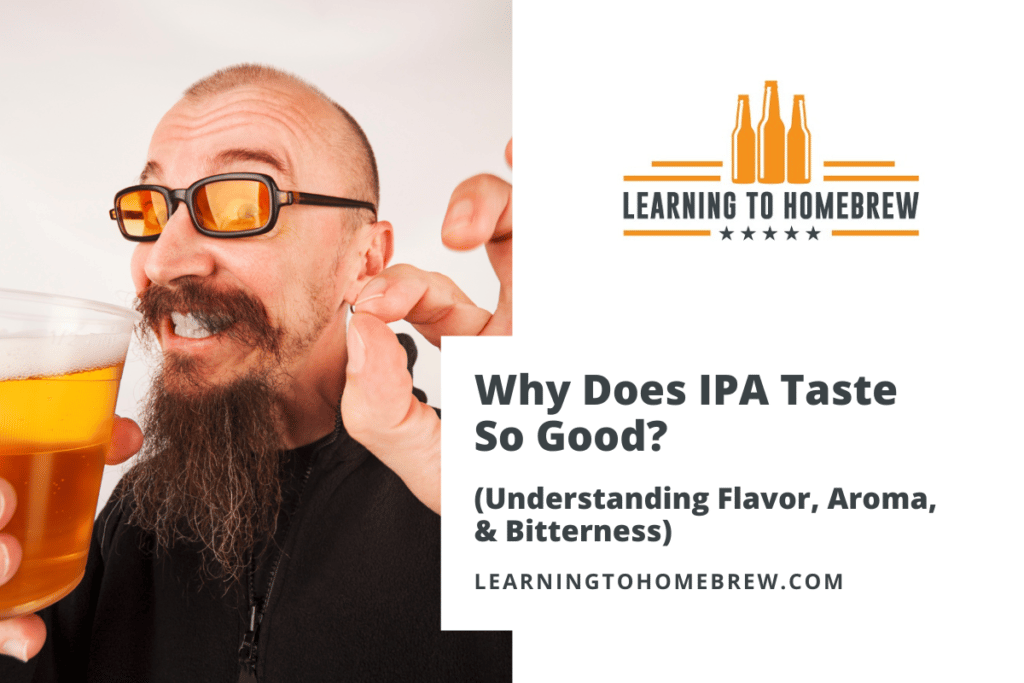Beer styles with high alcohol content have been rising in popularity over the past few decades. None more so than the India Pale Ale. But do IPAs really contain more alcohol than other beers?
IPAs beers typically have more alcohol than other beer styles because of the amount of malts used in the brewing process. IPA-style beers are known for their hoppy flavors, but this intense bitterness will require balance to produce a palatable beer. Brewers may then increase the malted grains, which means more fermentable sugars and a higher ABV.
Keep reading to learn more about the substyles of IPA and which ones have more alcohol compared to ‘regular’ beers.
Topics We Cover
Are IPAs higher in alcohol than other beer styles?
When it comes to beer there are many different styles. Each one has a typical range of alcohol content that characterizes the style.
IPAs tend to be higher in alcohol content than most other beer styles. However, there are some other styles just as strong if not stronger. These stronger beers are often labeled ‘Imperial’ beers. Popular beer styles, especially mass-market brews, hover around 5% ABV.
| Beer Style | Average ABV |
|---|---|
| American Imperial Stout | 7-12% |
| American IPAs | 6-7.5% |
| American Lagers | 4-5% |
| Belgian Blonde Ale | 6-8% |
| English IPAs | 5-7% |
| Imperial IPA | 7-10.5% |
| Irish Stouts | 4-5% |
| NEIPAs | 6-7.5% |
| Porters | 5% |
Although the definition of full-strength beer depends on who you ask, IPAs tend to be on the low end of full-strength or ‘export’ beer. Since the most common beers are in the mid-strength range, this makes IPAs stronger than most beers.
Low-strength beer tends to be 4% ABV and below. Mid strength is from 4% up to 6%, and full strength is 6% and up.
American IPA
American IPAs tend to be rather bitter, with IBUs between 50 and 70. American IPAs also tend to feature American hop variants.
American IPAshave an ABV between 6% and 7.5% on average.
Some examples of American IPAs are Sierra Nevada’s Torpedo, Lagunitas Brewing Co.’s IPA, and Bell’s Brewery’s Two Hearted Ale.
English IPA
English IPA is a more balanced style than others. It tends to have between 30 and 60 IBUs.
English IPAs range between 5% and 7% ABV on average.
Examples of English IPAs include Goose Island’s Goose IPA, Shipyard Brewing Company’s Fuggles IPA, and Great Lakes Brewing Company’s Commodore Perry.
New England IPA
NEIPAs tend to focus on fruity hop flavors and have a low bitterness (30 and 50 IBUs).
New England IPAs (NEIPA) tend to have between 6% and 7.5% ABV.
Common NEIPAs include Tree House Brewing Company’s Julius, WeldWerks Brewing Company’s Juicy Bits, and Trillium Brewing’s Scaled.
Imperial or Double IPA
Imperial IPAs – also called Double IPAS – are characterized by their strength in all aspects. Bitterness tends to be quite high at 65 to 100 IBUs.
Imperial IPAs tend to have ABVs between 7% and 10.5%.
Some examples of Imperial IPAs include Dogfish Head Craft Brewery’s 90 Minute IPA, Russian River Brewing Company’s Pliny The Elder, and The Alchemist’s Heady Topper.
Why is IPA beer stronger (and have a higher ABV)?
While IPAs don’t have to be high in alcohol content to be classified as an IPA, it is a characteristic of almost beers of this style. The answer to the question of why is largely dependent on the current school of brewing thought.
IPAs are stronger than other beers because the brewers strive for a balanced beer. To balance the increased bitterness, flavor, and aroma from the hops you need to add more malts which can result in higher ABV.
This is just one of a few common reasons that IPAs tend to be stronger than other beers. Below are some of those other reasons. I will also expand on how balancing the bitterness can result in higher ABV.
Balancing bitterness
All IPA styles are characterized by the high amount of hops used in their brewing. Hops add a lot to a beer. One of the biggest aspects of hops is the bitterness they can bring.
If the brewer does not want a bitter-focused beer, they can add more malted grains. This balances the bitterness with malty flavors. Malted grains are also a source of fermentable sugars that can raise the ABV if fully attenuated.
It is the malts and any unfermented sugar in the end product that balance the bitterness. The higher ABV is a side effect. How much of the sugar gets fermented depends on the yeast used for the IPA. The better the yeast is at fully attenuating the sugar, the higher the ABV will be.
Balancing hop aroma and flavor
The other big aspects that hops add are aroma and flavor. The specific flavors and aromas they add will be different for each hop variety. But just like bitterness, they can be overpowering if they are the only notes.
Hop flavor and aroma can be balanced in the same way as balancing bitterness. The brewer can balance them with malt flavors which come with a higher ABV.
When brewers add malts for their flavor, they are also adding sugar that can be turned into alcohol. This provides balancing flavors as well as alcohol.
Alcohol can increase the perception of bitterness in high concentrations. However, in the relatively low concentrations of a beer, this is harder to detect.
Mouthfeel and body
Another reason a brewer would want to add more malts (and thus more alcohol) is the mouthfeel of the beer.
Hops can negatively affect the body of a beer if left unchecked. Without enough malts to balance the hops, the beer can have a thin mouthfeel.
Certain malts can improve the mouthfeel of a beer. Most of these malts will also increase the alcohol content of the beer. That said, some of them are unfermentable and will only add to the mouthfeel and flavor.
Safety and transportation throughout history
Lastly, there is the desire to have an unspoiled beer. Though this is less of a concern these days, it can still influence the style.
High alcohol content can prevent bacteria from spoiling a batch of beer. This is also accomplished by the hops as they have antimicrobial properties.
If brewers needed to ensure beer could survive a several-month journey by ship, they would increase the alcohol levels in the beer.





